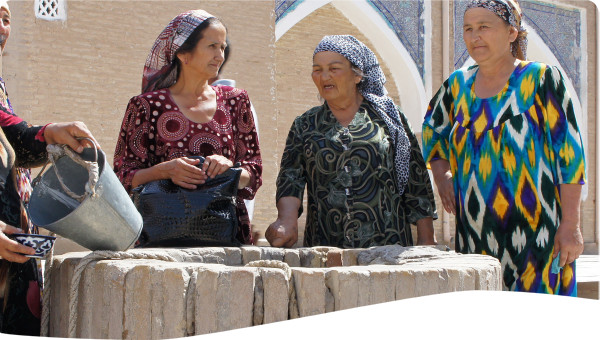Kutch, Gujarat faces severe drought, desertification, and degraded pasturelands, threatening the livelihoods of pastoral communities, women in particular. The MARAG led Pastoral Women Alliance (PWA) addressed this through women's leadership in pastureland restoration across 10 villages. They took action by forming Women's Pastureland Management Committees, land mapping, capacity building, and more.This led to improved biodiversity, increased milk production, community empowerment, and enhanced sustainability. This case is highly relevant for those seeking to empower marginalized communities, restore degraded lands, and promote gender equality.
Kutch, the westernmost district of India in Gujarat, faces a relentless battle against an unforgiving arid climate. With over half its land is either flooded by seawater or turned into desert, making farming nearly impossible (as reported by ICID). Seven of the nine Talukas (villages) of the Kutch district are rate as drought prone. In this region, traditional herdsmen known as “Maldharis”, face significant challenges from drought and desertification. Women in these communities play a crucial role, bringing valuable expertise in animal care and grazing land management. Despite government efforts to allocate grazing land, pastoralists struggle due to a lack of awareness and unproductive grazing areas, often leading to migration in search of suitable grounds.
Pastoralists in Kutch often embark on annual migrations of 8 to 10 months in search of food and water for their livestock. Though vital to nature conservation and local economies, these resilient communities are often overlooked. Organizations like MARAG and the Pastoral Women Alliance (PWA) work to raise awareness and empower the youth to advocate for their rights. By leveraging their traditional knowledge, pastoral women play a crucial role in restoring grazing lands and ensuring sustainable livelihoods, preserving both their heritage and the environment.
The MARAG initiative began with the objective of reviving 100 acres of common pastureland across ten drought prone villages in Kutch to improve local livelihoods and ecological health. Leadership came from MARAG alongside women leaders from the Maldhari pastoral community, who formed the Women’s Pastureland Management Committees (WPLMCs). These committees, each comprising 10 women, defined objectives such as restoring grasslands, improving livestock nutrition, and enhancing incomes.
Key actions included:
- Identification of land for regeneration: Committees, in collaboration with community members and local authorities, identified suitable land for regeneration based on factors like soil fertility, water availability, and accessibility.
- Dialogue with government authorities: The Alliance negotiated with government authorities to secure five-year leases for the identified land parcels, ensuring legal support for the women-led committees' management efforts.
- Technical training: The Alliance provided training on grassland management, teaching committee members to use mobile apps for identifying catchment areas, assessing soil fertility, and selecting seeding locations.
- Land preparation: Committees applied their training to prepare the land by leveling and clearing vegetation, creating ideal conditions for seed sowing and effective grassland regeneration.
- Village-level meetings: The Alliance organized meetings to discuss grassland regeneration, giving community members, especially pastoral women, a platform to share their concerns and solutions about land degradation.
- Formation of village-level committees: These committees, led by local women leaders, were established to coordinate regeneration efforts and mobilize community support.
- Rules and regulations: Committees created guidelines and rules for operations, including membership criteria, meeting schedules, and record-keeping, ensuring transparency and accountability in decision-making.
The MARAG initiative led to significant social, economic, and environmental benefits:
- Environmental Impact: Enhanced biodiversity, revived native grasses, improved soil fertility, and raised groundwater levels.
- Livelihood Impact: 560 livestock-keeping households experienced increased milk production and income due to better grazing conditions.
- Social Impact: Women gained leadership roles, challenged patriarchal norms, and became active decision-makers in land management.
- Policy Influence: The project fostered dialogue with local authorities and demonstrated women's capabilities in managing natural resources.
Women's Leadership is Crucial: Women's knowledge and leadership can drive sustainable land restoration when given decision-making authority.
Inclusive Governance Builds Resilience: Community ownership and transparent decision-making foster stronger social cohesion and commitment.
